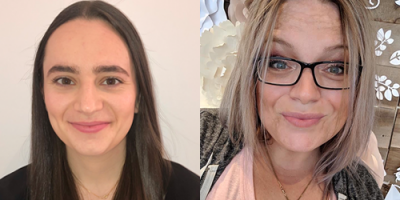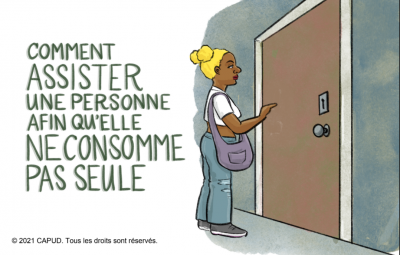Spotting for people who use drugs: What, when and how

With an increasingly poisoned drug supply and criminal laws that make the consumption of drugs more dangerous, people who use drugs rely on each other and their service providers to spot an overdose and get help as needed. But what if a person is using drugs on their own? This dilemma has become even more pronounced during the COVID-19 pandemic, as public health guidance has discouraged gatherings and promoted physical distancing.
Spotting is a community-driven response to offer a safer and less isolated way for people to consume substances that are criminalized, poisoned and fatally toxic. This practice has existed for years and includes using a remote method, such as a phone call, text message or video call. The purpose of spotting is to address the risks associated with using alone by way of having someone around (remotely) to witness and respond to an overdose. Spotting can occur informally where individuals (whom I will refer to as spottees) reach out to peers, family members, or friends (whom I will refer to as spotters), or formally where spottees reach out to an established service, such as the National Overdose Response Service.
Our team – made up of researchers, individuals with lived experiences, harm reduction workers and student trainees – spoke to 30 people (20 informal and 10 formal) who used or provided spotting informally or formally across the provinces of Ontario and Nova Scotia. The purpose of this study was to gain a better understanding of how spotting services operate across Canada, their benefits and limitations, and how people thought they could be made better. Data were collected through semi-structured interviews. We gathered information on how and why people used spotting and what to consider when spotting. Here are some important takeaways:
1. People can spot anywhere
The majority of people explained that they used a phone or video call to spot and were often spotting and/or spotted at home. Some spotted on the go or in public spaces like a park. When starting the call, spottees said that they provided information such as their location, the substances used, methods of consumption and what they wanted their overdose response plan to look like (for example, who they would like the spotter to call if an emergency situation happened). The spotter stayed on the call while the spottee was using, and a bit afterwards to ensure they were okay. The timing of the spotting ranged depending on methods being used (for example, the suggested spotting duration for intravenous injection is 10 minutes, for smoking it is 15 minutes, and for intramuscular injection it is 45 minutes).
2. The benefits of spotting are manifold
Most participants explained that benefits of spotting were that it improved safety, privacy, the prevention of COVID-19 transmission and accessibility to essential overdose response. Beyond these benefits, participants also explained that spotting created a stigma-free environment. It facilitated connections to individuals within their community, and because of this, helped to improve mental health and access to harm reduction resources and supplies like new injection equipment.
3. What to consider when spotting
Here are a few tips if you decide to spot someone:
- Know the full address of the spottee or where they are consuming.
- Know who you need to call in an emergency situation, such as the number of emergency services in the spottee’s area and/or the name and number of the spottees preferred community responder. When calling community responders, let them know your name, why you are calling, provide them with the address of the spottee, and if available, ask them to bring naloxone.
- The Good Samaritan Drug Overdose Act protects spottees from charges related to drug possession and breach of conditions, but will not protect them against other charges such as production, trafficking, outstanding warrants and other crimes not outlined in the Act. Spotters should recommend spottees put away all items (e.g. supplies, other substances) which could be used against them if police were to attend a potential overdose event.
- If relevant, ask the spottee to put out naloxone, put away any pets and unlock their door.
- Getting on a video call may make it easier to identify any problems with spottees.
- Getting familiar with the range of overdose symptoms is essential.
- If available, both spotters and spottees should seek support to help minimize burnout.
Spotting represents a novel addition to, but not replacement for, existing harm reduction services. Additional supports such as creating “how-to” guidelines and adapting the Good Samaritan Drug Overdose Act can help improve access to and effectiveness of spotting practices for all people who use drugs.
This short video and comic book from the Canadian Association of People Who Use Drugs (CAPUD) are excellent resources for people who want to know more about how they can spot someone.
Melissa Perri (she/her),MPH, is a PhD student in social and behavioural health sciences at the Dalla Lana School of Public Health, University of Toronto.
Nat Kaminski (they/them) is a non-binary, queer, harm reduction and decriminalization advocate and sits on the boards of both the Canadian Association of People Who Use Drugs (CAPUD) and the Ontario Network of People Who Use Drugs. They work as a research assistant at the University of Toronto Dalla Lana School of Public Health.

